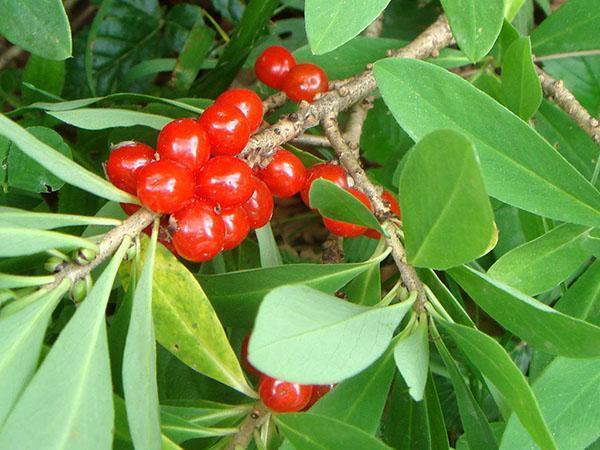Poisonous berries of Russia
 People are wary of picking mushrooms in the forest, because poisonous mushrooms grow among them. But unfortunately, a beautiful red or black berry does not cause any suspicion in a person, therefore, cases of poisoning with berries occur much more often than poisoning with mushrooms.
People are wary of picking mushrooms in the forest, because poisonous mushrooms grow among them. But unfortunately, a beautiful red or black berry does not cause any suspicion in a person, therefore, cases of poisoning with berries occur much more often than poisoning with mushrooms.
Poisonous plants grow mainly in swampy areas and in the forest. The flowering period for such plants begins in May-June. Poisonous fruits ripen at the same time as edible berries. Due to the external similarity between edible and poisonous berries, it is easy to confuse them, so be very careful, especially when walking in the forest with children.
In most cases, toxic substances are found in all parts of the plant. It is better not to touch suspicious or unfamiliar shrubs and flowers.
Such poisonous plants are common, which are found in the summer cottages of some gardeners:
- four-leafed raven eye;
- May lily of the valley;
- marsh calla;
- wolfberry ordinary.
- narcissus;
- delphinium;
- castor oil plant.
Let's consider some of them.
Four-leafed raven eye
Not knowing the distinguishing features of the four-leafed crow's eye, one can mistake its berries for blueberries. The toxins contained in berries affect the cardiovascular and central nervous systems, paralyzing the heart.
The raven's eye berry cannot be distinguished from the edible fruit, but fortunately, the blueberry bush and the raven's eye are different from each other. The poisonous plant has one stem from 10 to 25 cm high. At the base of the shrub, four leaves grow, which are located along the perimeter of the stem. The flower stalk and berry are located at a height of 25 cm.
Ripe black berry. Fully ripens in August.
May lily of the valley
Bloom lily of the valley occurs in May. Poisonous substances are found in all parts of the plant, but the greatest amount of toxins accumulates in the berries. The poison contained in the fruit of the lily of the valley disrupts the work of the heart.
Common wolfberry
"Wolf's bast" or common wolfberry is especially dangerous when immature. Green fruits contain a whole complex of toxic substances that affect the central nervous system. Touching branches and leaves can lead to poisoning. At the same time, redness and blisters appear on the skin.
Marsh calla
Marsh calla is sometimes called false calla lily, due to the similarity of the flowers of these plants. The marsh calla is often planted in summer cottages to decorate the pond. Only the berries of this plant are dangerous. They ripen in September and are gathered in a bright red ear. First of all, toxins affect the gastrointestinal tract.